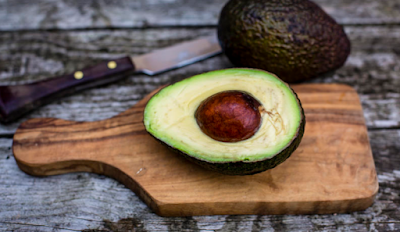
I know this is not a meal-ruining problem; strings or no, avocados are delicious and amazing and nutritional powerhouses. But for about $2 each, I would prefer to buy ones that are creamy and smooth.
According to Mary Lu Arpaia, PhD, an extension subtropical horticulturist at the University of California, Riverside who works with the California Avocado Commission, these strings are actually the vascular bundles that bring nutrients and water into the fruit. The vascular bundles serve an important purpose: they are the internal "plumbing" within the tree and connect the fruit to the rest of the tree (yes, avocados are a fruit).
Arpaia explains that there are a few different reasons why some avocados develop more prominent vascular bundles, the first being simple genetics. "Some varieties just tend to be stringier than others," she says. "Hass generally is not stringy, but you do run into fruit that are [stringy] from this variety. On the other hand, Stuart, which is a rich, nutty-flavored variety, almost always is stringy."
There may also be a "grower effect" when it comes to avocado texture. "Over the years, when we have done experiments with fruit from multiple growers, we have noted that some have 'stringier' fruit than others," says Arpaia.
And while there aren't any external signs that an avocado is going to be stringy (you have to cut it open to be 100% certain, she confirms), fruit maturity (how long the fruit has been on the tree) and seasonality can play a role.
"Early season fruit tend to be stringier than mid- or late-season fruit," Arpaia says. This means if you're buying California Hass avocados, if they are going to be stringy they'll most likely be stringy early in their season, which lasts from January until September. Peruvian Hass avocados are in season from April until August, while Chilean avocados from August until early spring. Seasonality of avocados from Mexico is a little more difficult to pinpoint, since trees in Michoacán flower several times of year, contributing to several annual "fruit seasons."
Although more research is needed to understand why avocado texture tends to become creamier later in the season, Arpaia believes the ripening process may have something to do with it. "My guess is that as the fruit gets more mature, the enzymes responsible for ripening are more active, and this results in more cell wall breakdown, even to the strings," she says. "But this is just a guess with no evidence to support."
It is possible that increased demand for the versatile fruit has contributed to more less-mature avocados or fruit from younger trees in circulation. "Avocados have gained so much attention and demand, for good reason," says Wendy Bazilian, DrPH, RD, author of Eat Clean, Stay Lean. "Keeping up with this demand has likely created more plants, and more immature ones that are 'coming up' and maturing naturally."
"Theoretically, a younger fruit or tree may have lower nutrients in an area or two potentially, but we don't really know for sure—and I would say that it would probably be a fairly insignificant difference at best," says Bazilian.
Nor will they change the way your favorite avocado dishes taste. "I know that strings can be a nuisance at times," says Arpaia. "But they should not influence the flavor of the fruit."
SOURCE: Health












Post a Comment